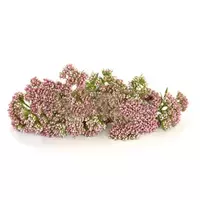Valerian

Such a genus of perennial herbaceous plants as valerian or Valeriána is known to the vast majority of the population of our latitudes. As a rule, it is known about valerian that the plant is considered medicinal and has a favorable effect on the nervous system of the human body. However, the useful properties of valerian do not end there.
In contrast, the distinctive properties of valerian are used not only in the medical or pharmacological spheres. Researchers found the first official references to such a plant as valerian in the works of the Italian botanist Silvatico, who lived in the 13th century. However, many scientists agree that many types of valerian have been used by humans since time immemorial.
Valerian species
About 217 species of valerian are known to modern science. Many species of the plant successfully grow in the Russian Federation. Among the most common species of valerian can be distinguished valerian medicinal or Valeriana officinalis. The valerian plant grows in European territory, as well as in central Asia and the American continent.
Valerian grows throughout the Russian Federation with the exception of the Far North, as well as desert areas located in Central Asia. The root system and fresh valerian leaves are of greatest importance to humans. Biologically active compounds included in the valerian composition are used as drugs in the treatment of certain types of disease.
Composition of Valerian
Valerian has sedative and antispasmodic properties. In addition, the composition of valerian contains substances that increase the secretion of the gastrointestinal tract, have choleretic effects and contribute to the expansion of the coronary vessels. Distinctive taste and aroma properties have found quite wide application in the food industry.
Valerian is most popular in the United States, where the plant is used in the production of various essences, as well as alcohol containing tinctures and liqueurs. In Europe, valerian is used as a medicine, as well as a spice. Fresh valerian leaves are added to vitamin salads made from vegetables. Often valerian leaves are served as a side dish for fish dishes.
Valerian benefits
The main benefit of valerian lies in the unique and naturally balanced chemical composition of the plant. The therapeutic effect of the plant is primarily due to the essential oils contained in valerian, as well as alkaloids. The root of the plant contains a large amount of essential oil, which also plays an important role in medicine and pharmacology. Valerian brings tangible benefits in diseases of the nervous and cardiovascular system of a person.
Valerian-based products include the famous drops of the same name, as well as valocordin and corvalol. In addition, infusions, decoctions, as well as powders are made on the basis of valerian. Experts say that traditional valerian tincture is much more effective than tablets based on dried plant extract.
The harms of Valerian
In addition to the benefits, there is also the harm of valerian to the human body. People suffering from chronic enterocolitis can cause huge damage to valerian. In addition, valerian has harmful effects in hypertension. Regular consumption of valerian in large quantities can lead to sleep disturbance.
valerian 0.1 kCal
Energy value of valerian (Ratio of proteins, fats, carbohydrates - ju):
Proteins: 0 g (~ 0 kCal)
Fats: 0 g (~ 0 kCal)
Carbohydrates: 0 g (~ 0 kCal)
Energy ratio (b | y): 0% | 0% | 0%
 Español
Español Français
Français Português
Português Русский
Русский 简体中文
简体中文 繁體中文
繁體中文 日本語
日本語 한국어
한국어 العربية
العربية Türkçe
Türkçe Қазақ
Қазақ Deutsch
Deutsch Italiano
Italiano Українська
Українська
